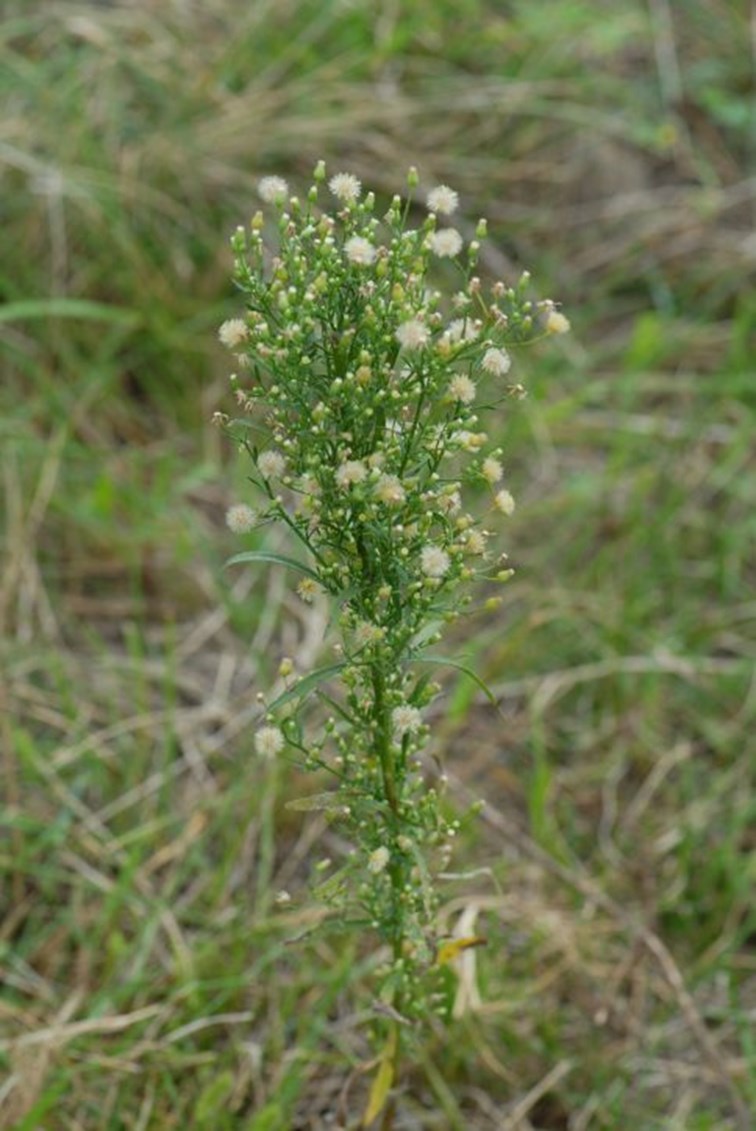Vinews
No. 18 — Sept. 9, 2019
Contents:
- Alternative Weed Control Products
- Grape Exchange
- Survey of Viruses Found in Grapevine Cultivars in Missouri
- Cumulative Growing Degree Days for the Seven Grape Growing Regions of Missouri from April 1 to Sept. 9, 2018
Alternative Weed Control Products

Recent reports and lawsuits involving glyphosate have many grape growers thinking about alternatives to glyphosate. Glyphosate is the active ingredient in the non-selective herbicide first introduced as Roundup. Roundup was first introduced in 1974 and the patent expired in 2000. Since the patent expired there has been a large number of generic herbicides introduced that have the active ingredient glyphosate. The use of glyphosate in agriculture increased dramatically with the introduction of genetically modified corn (GMO) in 1996. The GMO-corn is resistant to glyphosate applications. This provided corn growers the opportunity to apply the non-selective herbicide Roundup in GMO-corn and control emerged weed species. Similarly followed by the introduction of Roundup resistant soybeans. Corn and soybean growers quickly adopted the Round-up resistant crops and this resulted in Roundup being applied almost exclusively in these crops. The absence of other herbicides with other modes of action being used in corn or soybeans resulted in the selection for a large number of herbicide resistant weed species. For grape growers in Missouri using glyphosate containing herbicides in their vineyards, a common glyphosate-resistant weed in vineyards is Horseweed Conyza, canadensis.
The development of herbicide resistant weeds is a threat to grape production. Worldwide, 311 biotypes have confirmed resistance to glyphosate of which 44 weed species have developed resistance to glyphosate. In Missouri, seven weed species have developed resistance to glyphosate. Six of these weeds are broadleaf and one grass species. To maintain the viability of glyphosate as a herbicide, growers should rotate herbicide mode of actions.
A good alternative to glyphosate are herbicides containing the active ingredient glufosinate (Table 1). Do not be confuse glyphosate (Roundup and other trade names) with glufosinate (Rely 280 and other trade names).
The only similarity of glyphosate and glufosinate are the chemical names and both active ingredients result in non-selective weed control. Glyphosate and glufosinate have different modes of action, different effectiveness on perennial weeds and differences in translocation within the plant or systemic movement. To date, only four weed species have developed resistance to glufosinate and all of these are grass species. In the United States, Italian ryegrass Lolium perrenne ssp. multiflorum in California and Oregon have developed resistance to glufosinate. Glufosinate herbicides have been effective in controlling most all glyphosate resistant weed species. There are only two reported instance of a weed species developing resistance to both glyphosate and glufosinate. A biotype of Italian ryegrass in the state of Oregon and perennial ryegrass L. perenne in New Zealand.
Glufosinate is very effective in controlling small (< 3-inches in height) grass and broadleaf weeds similar to glyphosate. Perennial and large grass weeds are more difficult to control with glufosinate. The Rely 280 label has different rates based on weed heights. Glufosinate will typically burn-down perennial weeds and large grasses but the weeds will often regrow. Unlike glyphosate, glufosinate has limited systemic activity once it enters the plant. This reduced systemic activity compared to glyphosate limits control of perennial weeds and large grasses.
If grasses are your predominant weed problem within the vine row, consider using a grass specific post emergent herbicide. Perennial and annual grasses can be controlled with Fusilade DX or Poast 1.5EC. Both of these products have a 50-day PHI. Since these herbicides are grass specific, there is limited potential for damaging grapevines. However, care should be taken to limit drift.
Managing weeds starts with identifying what weeds are predominant in your vineyard. Then learning about what herbicides will provide control of those weeds. Most all herbicides have some weakness in controlling certain weed species. Rotating herbicide modes of action and tank-mixing herbicides can improve control of difficult to manage weeds and delay selection for herbicide resistant weeds. To learn more about what herbicides are available for managing weeds in grapes see pages 140-142 in the 2019–2020 Midwest Fruit Pest Management Guide. Lastly, do not forget about other weed management options such as swing-arm mowers, shallow cultivation in vineyards not prone to erosion, and cover crops.
| Product Trade Name | Active ingredient | % active ingredient |
|---|---|---|
| Interline | Glufosinate-ammonium | 24.5 |
| Rely 280 | Glufosinate-ammonium | 24.5 |
| Refer 280SL | Glufosinate-ammonium | 24.5 |
Grape Exchange
Grapes for sale can be found by visiting the Grape Exchange webpage. If you would like to list grapes, for sale please contact Karissa King at kingkari@missouri.edu.
Survey of Viruses Found in Grapevine Cultivars in Missouri
Results from 2017 virus survey of Missouri vineyards is available here.
Cumulative Growing Degree Days for the Seven Grape Growing Regions of Missouri from April 1 to Sept. 9, 2019
| Region | Location by County | Growing Degree Days1 | ||
|---|---|---|---|---|
| 2019 | 2018 | 30-year Average | ||
| Augusta | St. Charles | 3176 | 3380 | 3162 |
| Hermann | Gasconade | 3079 | 3265 | 3019 |
| Ozark Highland | Phelps | 3326 | 3546 | 3276 |
| Ozark Mountain | Lawrence | 3275 | 3496 | 3211 |
| Southeast | Ste. Genevieve | 3209 | 3388 | 3179 |
| Central |
Boone | 3207 | 3454 | 3127 |
| Western | Ray | 3027 | 3265 | 3039 |
1 Growing degree days at base 50 from April 1 to Sept. 9, 2019. Data compiled from Useful and Useable at https://mygeohub.org/groups/u2u/tools. Click on link below to determine growing degree days in your area.
To determine the number of growing degree days accumulated in your area since April 1, use this tool.